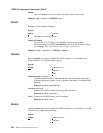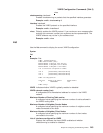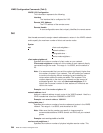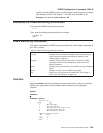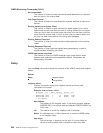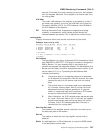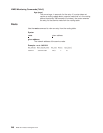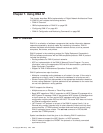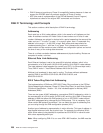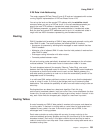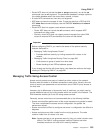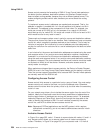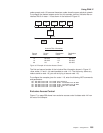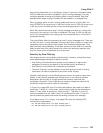v DNA IV does not provide any Phase III compatibility features because it does not
support the DDCMP data link protocols used by all Phase III nodes.
v NCP (the router’s implementation of the DECnet Network Control Program)
implements a subset of the original NCP commands and functions.
DNA IV Terminology and Concepts
This section contains a brief description of DNA IV terminology.
Addressing
Each node has a 16-bit node address, which is the same for all interfaces on that
node. An address consists of 2 fields: 6 bits of area number and 10 bits of node
number. Addresses are printed in decimal with a period separating the area and the
node, such as 1.7 is node 7 in area 1. If no area is given, area 1 is assumed. Any
address in the range 1.1 to 63.1023 is legal. Both nodes and areas should be
numbered starting from 1, with few, if any, gaps. This is because the maximum
node number and the maximum area numbers are configuration options and control
the size of many of the routing data structures.
There is no direct correlation between addresses and physical cabling. Routes are
computed to nodes, not wires.
Ethernet Data Link Addressing
Each Ethernet interface is set to the same 48-bit physical address, which is the
concatenation of a 32-bit prefix (AA-00-04-00) and the 16-bit DNA IV node address.
The node address is byte-swapped (to convert from PDP11 to Ethernet byte order).
Thus, DNA IV node 1.1 has Ethernet Address AA-00-04-00-01-04.
Multicast (not broadcast) is also used in routing. The three multicast addresses
used by DNA IV are AB-00-00-02-00-00, AB-00-00-03-00-00, and
AB-00-00-04-00-00.
802.5 Token-Ring Data Link Addressing
The implementation of DNA over IEEE 802.5 Token Ring conforms to the
DECnet
Digital Networking Architecture (Phase IV) Token-Ring Data Link and Node Product
Functional Specification
, Version 1.0.0, that includes support for Arbitrary MAC
Addresses (AMA).
There are two types of MAC addressing, conventional DNA IV addressing, which is
the concatenation of a 32-bit prefix (AA-00-04-00) and the 16-bit DNA IV area/node
address or AMA that allows the DNA protocol to run on IEEE 802.5 nodes without
their MAC addresses being changed by the DNA protocol. This is necessary if you
follow certain IBM protocol conventions. You can select the type of addressing that
you are using through the DNA configuration process (NCP>).
Another type of addressing representation is native bit-order. This type of address is
byte-flopped when sent over the physical layer. For example, the canonical 32-bit
prefix shown above (using dashes) is expressed as 55:00:20:00 in native bit-order
with colons separating each byte.
Note: When configuring DNA IV to run over ATM LAN Emulation, the AMA must be
used.
Using DNA IV
250
MRS V3.2 Protocol Config Ref Vol 2



